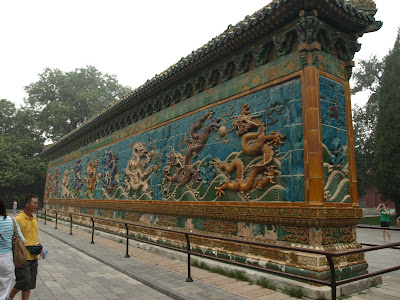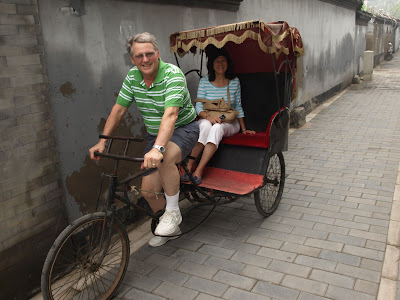Entrance to the Park
Sitting room in palace. Chinese palaces are many separate buildings connected by gardens and walk ways.
 | ||||||||||||
The Nine Dragon Wall lies north of the Five-Dragon Pavilion. It was built in 1402 and is one of three walls of its kind in China. It is made of glaze bricks of seven-colors. Nine complete dragons playing in the clouds decorate both sides of the wall.
The old woman was doing Chinese calligraphy with water and a large paint brush on the sidewalk.
Beihai Lake whose Island has the White Pagoda, which occupies the site of Kublai Khan's palace.
Starbucks is everywhere
The walkway was lined with Tea Houses and other places to eat.
The beautiful Lotus blossoms
We took the tunnel walkway to get back across the street and this old gentleman was panhandling and willing to take a picture.
We had a tour on a rickshaw by a very funny guy who spoke pretty good English. The place with the red doors is a Mahjong House and the men in the street are having a game.
The wheel behind the short post was used to crush wheat in the old days.
School yard- This is our tour guide and Myra in the rickshaw .
This was supposedly a general's house noted by the two poles coming out of the door. All of this information is according to our tour guide.
Very narrow alley ways.
We ended our tour and started for our next sight when it started to rain. We got a taxi just before the heavens opened up so we went back to the hotel and by the time the rains stopped it was too late to go to the zoo so I did not get to see the Giant Pandas. I guess it will have to wait till next visit.



























No comments:
Post a Comment